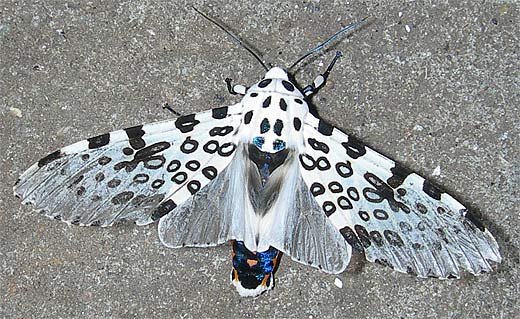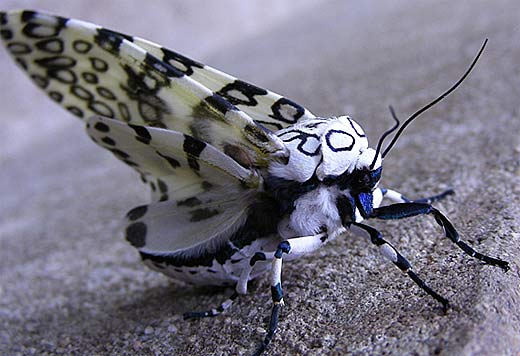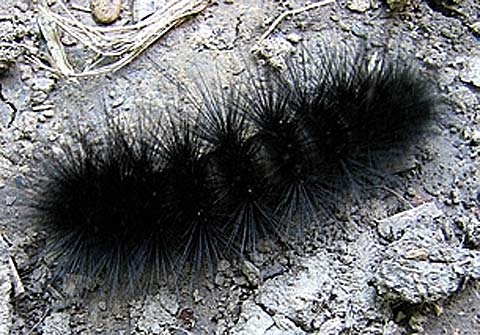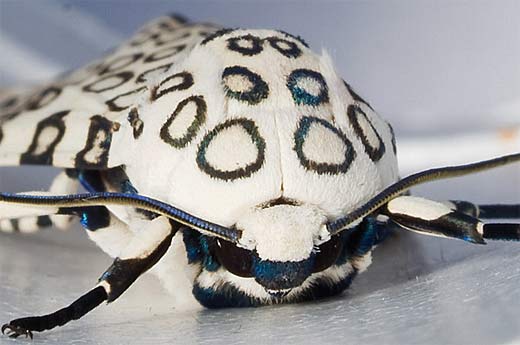Giant Leopard Moth – Formal Attire

Native to southern and eastern North America, with recorded populations everywhere from New England to Mexico, the giant leopard moth is a beautiful creature known from its amazing coloration and impressive size.

Sometimes referred to as “tiger eyed moth”, this insect species has a wingspan of over three inches (eight centimeters) and like most moths it’s nocturnal, rarely flying before dusk. Like all lepidoptira, the giant leopard moth begins its life as a caterpillar, and in this particular instance it’s of the “woolly bear” variety. This means that it has a coat of bristly setae all over its body. So, if anyone every tries to tell you a joke about bears becoming leopards, they’re most likely talking about this gorgeous creature. While a caterpillar, it eats many different varieties of broad leaf plant like plantains, dandelions, and cannabis. It spins a protective web-like substance around itself before cocooning to morph into a moth. The cycle from hatching to caterpillar to moth takes about a month.

Unfortunately, giant leopard moths don’t live very long as they don’t have mouth parts and don’t eat during this stage of their lives. As moths, they basically exist just to lay eggs before passing away. It is because of this short lifespan and its nocturnal habits that many insect enthusiasts rarely catch a glimpse of this moth, making the discovery and/or capture of one a pretty big deal for bug lovers. So if you ever see a giant leopard moth or its black caterpillar relative hanging out in your garden, take a good look and appreciate what you’ve just seen!

